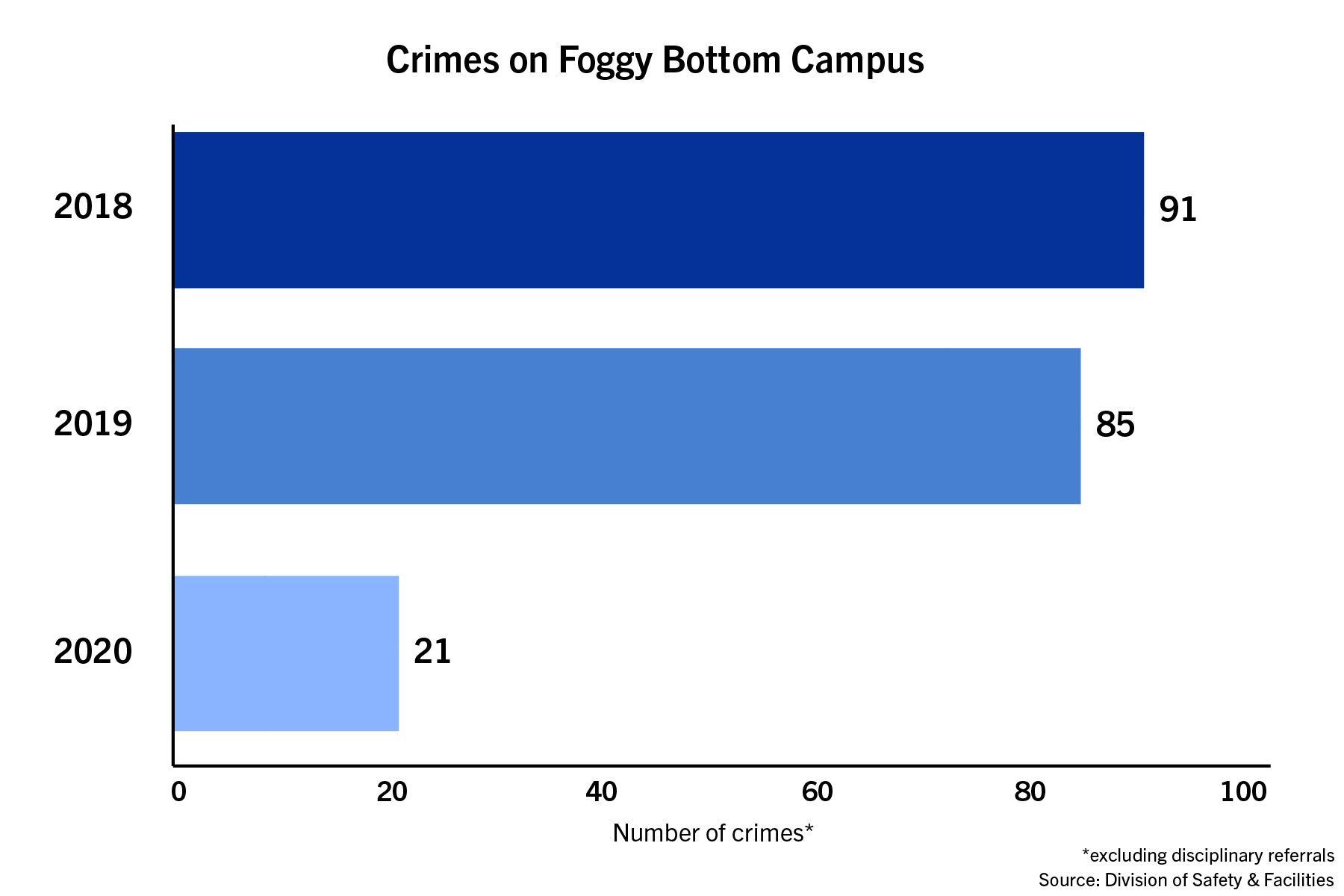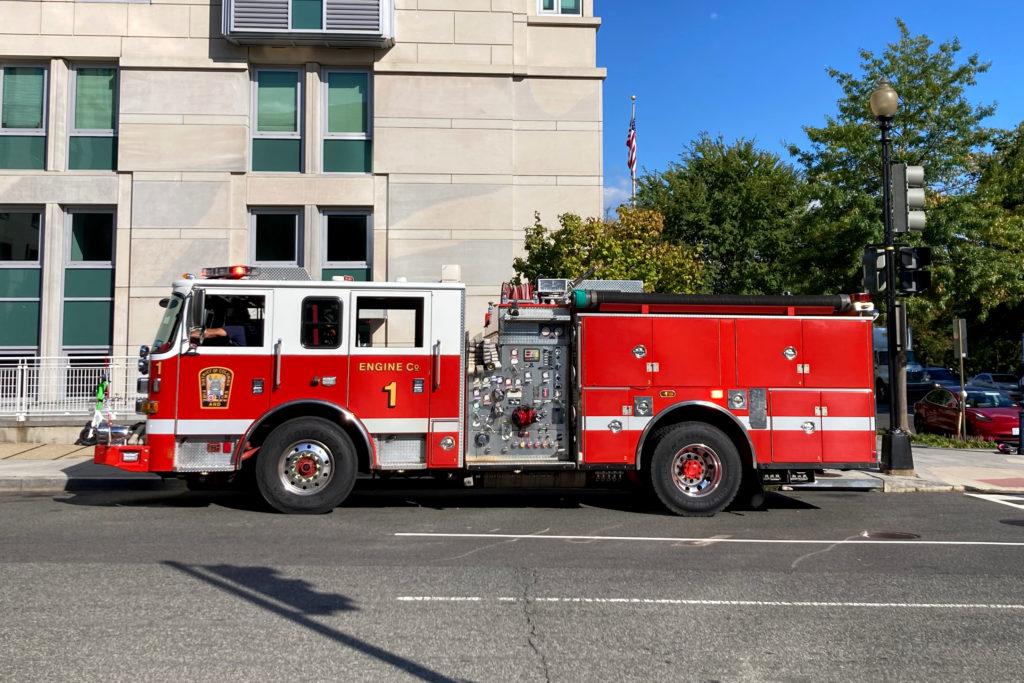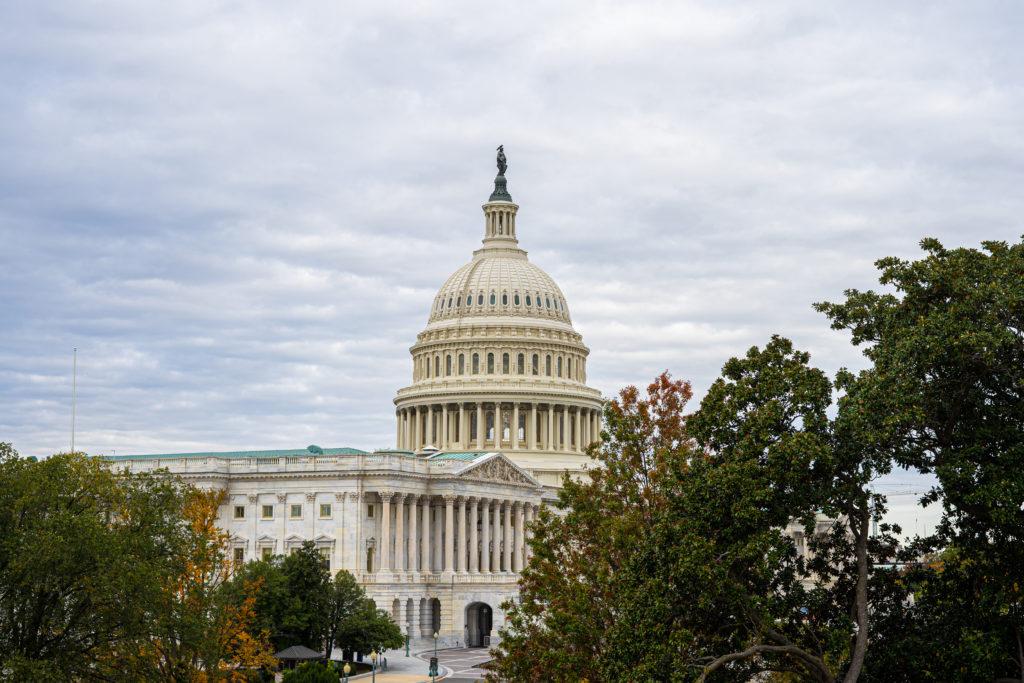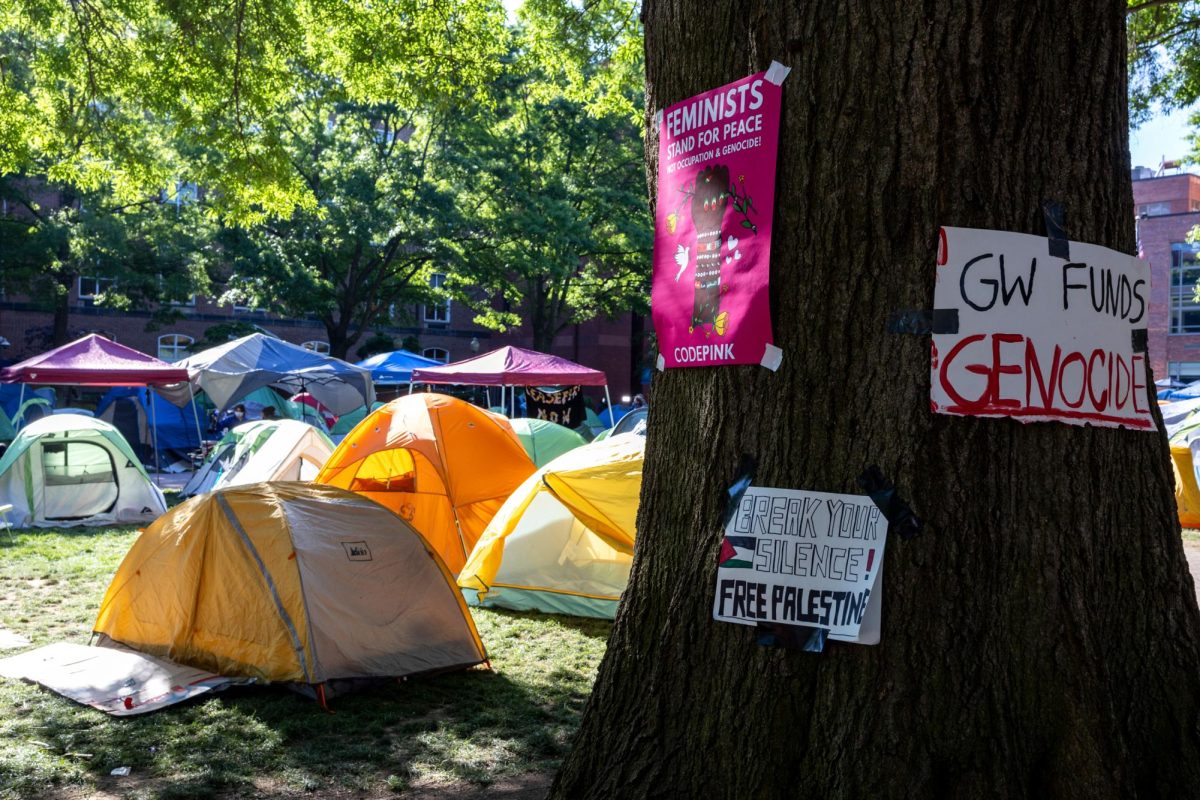On-campus crime rates dropped dramatically last year amid the COVID-19 pandemic, aligning with an overall citywide decline in criminal incidents.
The Annual Security and Fire Safety Report, released late last month, states that 21 crimes occurred on the Foggy Bottom Campus last year – not including disciplinary referrals for drug or liquor violations – marking a 75 percent decrease in crime from the 85 incidents in 2019. GW Police Department Chief James Tate and experts said the lack of students on campus during pandemic closures led to the dramatic drop in crime across campus.
“We attribute the significant decline in crime during the reporting period to the lack of residents on campus during the switch to virtual learning during the pandemic,” Tate said in an email.
The report, which all universities are required to release under the federal Clery Act, discloses the annual number and categories of crimes committed on GW property and the number of on-campus fires.
Officials recorded 251 disciplinary referrals for drug and liquor law violations last year, a 35 percent drop from the 385 referrals in 2019, according to the report. The data shows rape cases on the Foggy Bottom Campus dropped from 18 in 2019 to five in 2020.
Crime throughout D.C. dropped 19 percent in the last calendar year, according to District data. But the data shows homicides reached record highs, and assaults with a dangerous weapon increased by 3 percent.
The report states that three stove-top fires took place last year – one in District House and two in Fulbright Hall. The two incidents in Fulbright caused less than $100 in damage, but the District House fire damaged between $1,000 and $9,999 in property, according to the report.

Nicholas Anastacio | Graphics Editor
Officials recorded five fires in 2018 and seven fires in 2019, the report states.
Criminal justice experts said the drop of crime on campus is not surprising and is likely part of a national trend.
Josh Bronson – the director of education and leadership development for the International Association of Campus Law Enforcement Administrators, which includes GWPD as a member – said the downturn in crimes likely occurred nationwide in 2020 but can’t be confirmed yet without more analyses of national trends. He said he isn’t surprised crime at GW dropped with fewer students on campus.
“What we would expect to see is that numbers have fallen for the past year because there just weren’t students on campus,” Bronson said. “So with fewer people on a particular campus, we would expect to see fewer crime statistics going along with that.”
Bronson said the report leaves out crimes on private property, including those potentially affecting students, meaning Foggy Bottom might have faced more crime than indicated through the report. More than 2,000 students lived in off-campus housing during the fall 2020 semester after limited spaces due to coronavirus policies pushed many into apartments.
“You’re not talking about private housing, you’re not talking about private property that the campus doesn’t have control over,” Bronson said. “And so if there were students that were living in a private apartment building off the campus and attending classes virtually, and there was still a crime that occurred, it wouldn’t necessarily show up.”
David Muhammad – the executive director of the National Institute for Criminal Justice Reform, a criminal justice advocacy organization – said even though crime generally decreased during the pandemic, violence increased nationwide. He said U.S. law enforcement officials recorded more than 3,900 additional firearm deaths and nearly 9,300 additional firearm injuries in the United States in 2020 compared to 2019.
He said factors like economic desperation brought on by an increase in unemployment caused some of the spikes in violent crime in cities, mostly in theft and personal conflict.
“What has happened during this pandemic is really a perfect storm of problems that have all contributed to this increase in gun violence in particular,” Muhammad said. “You have the desperation and despair that kicked in early on in the pandemic when people lost jobs.”
He said while crime dropped, homicides in D.C. surged by 19 percent as the economy suffered, and gun sales – which increased by 64 percent from 2019 in the United States – added to the number of gun violence cases.
Muhammad said he expects the rate of violence to decline because of an increase in government funding for programs aimed at reducing violence, including community-based violence intervention programs. D.C. officials included $59 million in this year’s budget for violence prevention projects, including funding for youth safety groups, employment opportunities, mental health and other programs aimed at lowering crime in the District.
“In addition to effective community-based intervention efforts, those things, I’m confident will result in reduced gun violence in 2022,” Muhammad said.







